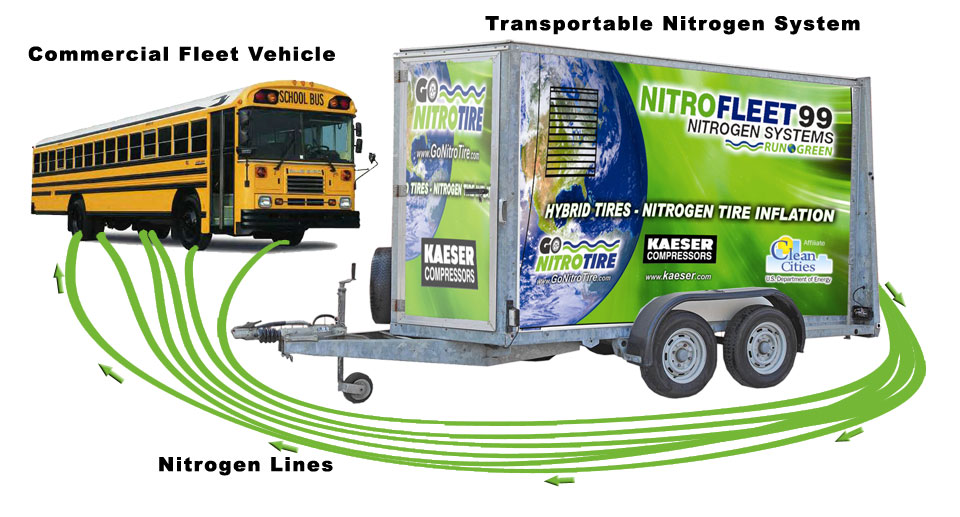 There’s a lot content out there on the debate of nitrogen tire inflation, whether it’s worth the costs, what the benefits are etc. But, there isn’t a whole lot out there that discusses how a nitrogen tire system works, or even shows what these systems look like. Until now.
There’s a lot content out there on the debate of nitrogen tire inflation, whether it’s worth the costs, what the benefits are etc. But, there isn’t a whole lot out there that discusses how a nitrogen tire system works, or even shows what these systems look like. Until now.
Nitrogen tire systems, like the Nitrofleet99 one showcased in the picture, utilizes a molecular sieve to pull the nitrogen right out of the air. A molecular sieve is a material containing tiny pores of a precise and uniform size that is used as an adsorbent for gases and liquids. With the sieve, the system pulls the nitrogen right out of the air, getting the good stuff without any of the negative components that can do damage to tires. Although these systems come with storage tanks so they can be used whenever necessary, a nitrogen tire system doesn’t require the additional purchase of the nitrogen gas in order to work. The system then connects to the tires via the nitrogen lines, as shown in the picture, to fill them up with pure nitrogen.
A nitrogen tire system can purge four to six tires of regular air, and refill them with nitrogen in about seven minutes. The system can also be used to top off tires with nitrogen. The Nitrofleet99 nitrogen tire system in particular comes with an additional wheel mounted cart, that can be used in parking lot, in a shop, or when multiple vehicles need to fill up with nitrogen. This is a great option for managed fleets who work with more than one vehicle during any maintenance check. The cart has a 30-gallon storage tank, as well as a 10-hour rechargeable battery, while the stationary system has 150-gallon tank. Because the Nitrofleet99 system already comes with its own storage tanks, a managed fleet doesn’t have to purchase additional tanks in order to fill all its fleet vehicles. The storage tank on the car allows it to work without it being connected to the main system.
That, in a nutshell, is how a nitrogen tire system works. It can fill up all four tires as once, saving consumers and managed fleets a lot of time, and come with a portable cart so managed fleets can fill multiple vehicles as once, instead of purchasing tons of machines or storage capacity.





